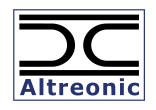City-KURT
The City-KURT is more than just a small electric vehicle. What counts is its capability to move people and goods. Cities are increasingly banning fossil fuel based vehicles from entering the city, neither is there room for large transport trucks. Yet, the need for transport and mobility remains.
Cities address the issue by a combination of solutions. People can walk and use the pedestrian friendly zones. Or use a bicycle. For longer distances taxies and shared vehicles can help. For mass mobility, public transport systems like underground metros or buses and trams can help. The City-KURT concepts fills the gap between individual trips, e.g. using bikes, and public transport.

Our City-KURT system creates concentration points at the borders of the city, especially when the city is historical. From these concentration points, people can take other means, more adapted to the demands of urban environments, one of which is a City-KURT that can be rented. A City-KURT grid of connection points is laid over a city whereby City-KURT vehicles can be used or rented to move between the connection points. The scheme applies equally well to moving people as to moving goods (think about e-commerce and last mile logistics).
A novelty is that at the connection point, multi-functional KURT-Stations are available for charging the vehicles during their short stops. People can take a short break, meet, or connect to the internet. Hence, a KURT-Station also has a social function. A KURT-Station is also mobile, hence not tied to a specific spot so that the grid can be adapted to the events and needs of the city.
A variant of the KURT-Station is the KURT-microdepot. It acts as a temporary but safe storage area for city-logistics operator or allows people to pick up their e-commerce packages.
For details, see the flyer attached.
